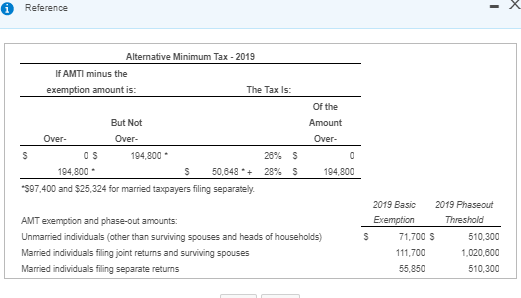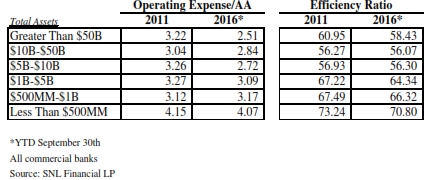School of Stocks Profitability Return Ratios


You have the option to withdraw the said consent in the manner specified under these Terms of Use. Please also read the Privacy Policy for more information and details as provided on the Website. Changes will be effective upon posting of the revised Privacy Policy on the Website. Simply open a FREE Samco Demat account and get FREE access to top notch research on best stocks in India. Companies with ROA of less than 5% are not asset-efficient and should be avoided. A ROA of more than 20% signals attractive investment opportunities.

Not utilizing any leverage may put the corporate at a disadvantage compared with its peers. Let us evaluate the return on assets of banking and commercial vehicles sector. ROA should always be used in comparing companies in the same industry. Banks and Information & Technology companies always have higher ROA as they have more intangible assets.
thoughts on “Difference between ROE (Return on Equity) and ROA (Return on Assets) – Finance | Management Notes”
A company’s financial future may be determined using these kinds of research.1 It is a common occurrence for shareholders to be more interested in this information than business executives. The advisors will first assess the two of them to see whether they are even eligible to get engaged. The banks will also take into account all of these details when determining whether or not to provide business money. In some industries, managers may rely on the return on assets when making decisions.

Return on equity assesses how effectively a company can use money from shareholders to generate profits and grow the business. Unlike other return on investment ratios, return on equity measures profitability from the investor’s perspective rather than the company’s. Higher ratios are nearly always higher than decrease ratios, but need to be in comparison with different firms’ ratios in the business. Since every business has totally different ranges of traders and revenue, ROE can’t be used to match firms exterior of their industries very successfully. The second half of the equation is called financial leverage, which is also known as the equity multiplier.
This ratio can be used to compare companies in the market and deliver peer-to-peer comparisons. It gives accurate indications of the financial efficiency of a company, thereby helping an investor make well informed financial decisions. The Return on Equity Ratio is a financial metric that tells investors about the management methodology of shareholders’ money by the concerned organisation.
Can the ROE of a company be in the negative values?
Sometimes analysts consider trailing income or income of the past twelve months to measure ROE. If you want to increase the ROA then you must try to increase the profit margin or you must try to make maximum use of the company assets to increase sales. This is because it indicates roe vs roa that the company is using its assets effectively in order to get more net income. You must make use of ROA to compare companies in the same industry. Avoid using ROA for comparing companies in different industries as the ROA for different industries is different.
Does ROE increase if ROA increases?
The Difference Is All About Liabilities
This equation tells us that if a company carries no debt, its shareholders' equity and its total assets will be the same. It follows then that their ROE and ROA would also be the same. If that company takes on financial leverage, ROE would rise above ROA.
The last component, financial leverage, deals with the company’s financial dealings. Even when there is no danger, more debt lowers the return on equity. ROE indicates how much profit may be made for every rupee invested in a business. In every sector, this is a crucial ratio, and for certain firms, it’s more important than ROA. For example, banks often bolster their capital by taking in as many deposits as possible before making loans with a higher interest rate.
For example, a company can artificially boost its Return On Equity by relying more on debts than its equity. A range of ROE cannot be declared as a good return on equity because the ROE ratio differs from sector to sector. Some sectors prefer an ROE of over 25%, while others may consider a value above 15% to be remarkable.
Three ratios that can help you identify good stocks
Companies do look at their financial health via the use of gross margin, net margin, ROA, and ROE. The information helps one to judge the firm’s overall condition since it shows how a company performs in comparison to other businesses. Even though these numbers are not very useful on their own, they may be used to measure oneself against others in the industry or to see how much one has improved over time.
ROE will not give you a clear idea about how a company is using its finances. ROA helps you understand how well the company uses both forms of finances that is debt and equity. So if you want to get a correct idea about how the company is performing then you have to consider both ROA and ROE.
Why is ROE always greater than ROA?
While ROA measures how effectively a firm is deploying its total assets, which are funded by equity as well as debt, the Return on Equity (ROE) measures how efficiently the equity is being deployed. Hence, ROE will always be greater than ROA.
There is no commitment to update or correct any information that appears on the Internet or on this Website. Information is supplied upon the condition that the persons receiving the same will make their own determination as to its suitability for their purposes prior to use or in connection with the making of any decision. You shall not copy , distribute , download, display, perform, reproduce, distribute, modify, edit, alter, enhance, broadcast or tamper with in any way or otherwise use any Materials contained in the Website. These restrictions apply in relation to all or part of the Materials on the Website; copy and distribute this information on any other server or modify or re-use text or graphics on this system or another system.
Regardless of the few setbacks of ROE, it is still considered an effective way to assess the performance and growth rate of a company’s stock values. Investors usually consider both metrics to evaluate the efficiency of a company’s management. Both ROE and ROA may differ depending on the company, so it’s important to consider them while looking into other financial performance metrics.
How do Analysts use Return on Equity?
Return on equity or ROE refers to a measurement of a corporation’s or an enterprise’s performance in a given period. To determine ROE, one needs to assess the net income for the brand and divide it by the shareholders’ equity. A high ROA indicates a healthy functioning and effectiveness of the company, and its ability to generate significant returns from the available assets. Since the total assets vary significantly from a manufacturing company to a service oriented company, it is imperative that RoA of the companies in the same sector be considered for comparison. For investors who are looking for a good company to invest in, the first thing they would look into is the profits that can be generated through the investment. Investors can gauge a company’s ability to make money by looking at its ROE Ratio.
- When calculating a company’s profit margin, the return on assets or return on total assets is used.
- The greater the ROE, the more effectively the firm is able to manage and generate income.
- Developed in 1912 by Donaldson Brown, a DuPont explosives salesman, this method of analysis is also referred to as the DuPont Model, DuPont equation or the DuPont method.
- It is crucial to note that a negative ROE doesn’t mean that you should disregard the company altogether.
- The company’s operational efficiency is affected by the use of resources, which is seen in the net profit margin.
If you want to comprehend difficult subjects in simple terms, he’s your man. Upon any change, the updated Terms of Use will be updated on the Website or any other means. Your continued use of the facilities on this Website constitutes acceptance of the changes and an Agreement to be bound by Terms of Use, as amended.
Every sector has a median ROE, which one can calculate by averaging return on equities of all the companies from the sector. Using the average ROE as a base one can then compare performance between peer companies. One limitation of ROE formula is that one can’t use it to compare between companies from different sectors. But it is still an excellent tool to determine performance between companies from the same domain.
Which is better ROE or ROA?
ROA is a better measure to determine the financial performance of a company. Higher ROE along with higher ROA and manageable debt is producing decent profits. Higher ROE can be misleading with lower ROA and huge debt carried by the company.
Also companies with high ROE are likely to generate huge cash surpluses and that needs to be managed. The next variable in the formula is shareholder equity, which is the difference between a company’s asset and liability. It signifies the amount left for shareholders if the company has to write off all its liability with its assets. The DuPont evaluation model offers a more accurate assessment of the significance of changes in a company’s ROE by focusing on the various implies that a company has to extend the ROE figures. The means embrace the profit margin, asset utilization and financial leverage .
For example, you cannot compare FMCG companies with Steel companies. If you want to compare HUL you can compare it with companies of the same sector, like Godrej Consumer Products. Hence, logically ROCE and ROE would be similar if the company did not have any debt. But technically, even if the company doesn’t have to pay any interest on the debts, it still has to pay the taxes. Also, you must look for consistency in ROE growth and compare it with the industry’s ROE. You must know many things before analysing a company depending on these ratios.
But most analysts use another interesting concept of returns which is called the Return on Capital Employed . While the ROE only considers the net return on equity, the ROCE considers returns to all stake holders. For example, in a business both equity shareholders and long-term lenders provide capital. We are not talking about the working capital and short term loan providers. But there is a significant portion of long term funding that comes in the form of term loans from banks, long term bonds, international FCCBs etc.
What is the difference between ROI and ROE?
Both ROI and ROE are important, but they measure different things. ROI measures the percentage return on an investment, while ROE measures the percentage return on the equity that has been invested.
